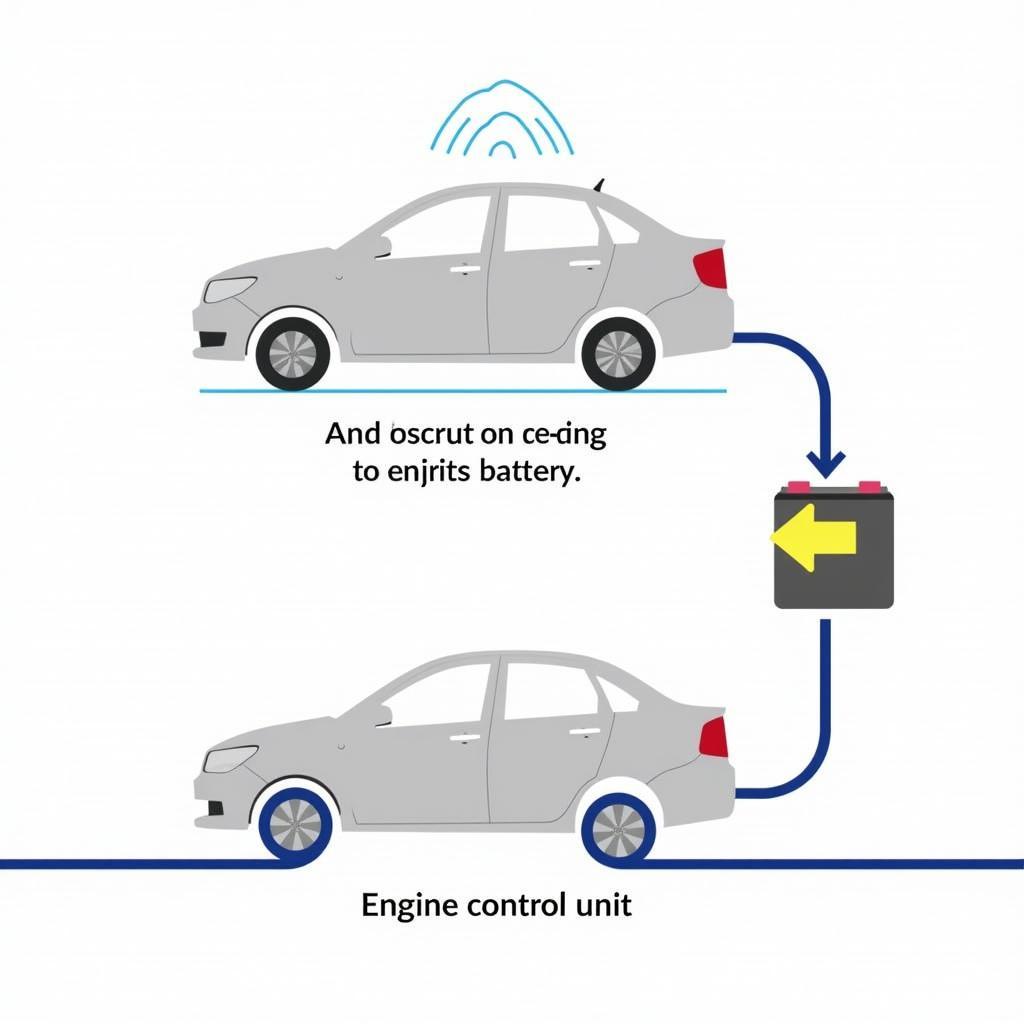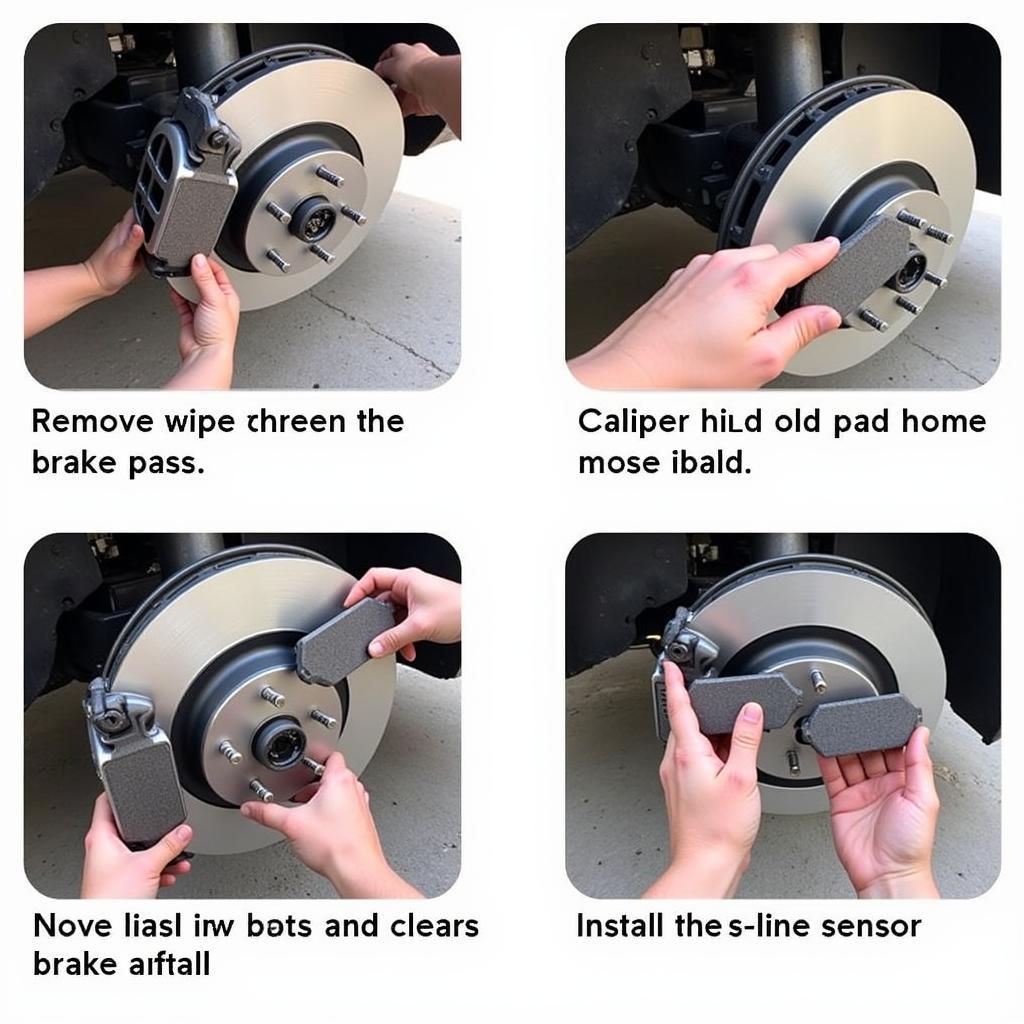When your battery and check engine light come on simultaneously, it can be a confusing and concerning situation. This often signals an underlying issue that requires attention. Don’t panic! This guide will help you understand the potential causes, diagnostic steps, and solutions when both your battery and check engine light illuminate.
Understanding the Warning Lights
What the Battery Light Means
The battery light, often a red battery icon, indicates a problem with the charging system. This could mean the alternator isn’t functioning correctly, the battery is failing, or there’s a loose or corroded connection in the charging circuit. Ignoring this light can lead to a dead battery and leave you stranded.
Decoding the Check Engine Light
The check engine light, typically an orange or yellow engine-shaped icon, is your car’s way of telling you something’s wrong with the engine management system. This light can be triggered by a wide range of issues, from a loose gas cap to a serious engine problem. A proper diagnosis is essential to pinpoint the exact cause.
Common Causes for Both Lights Illuminating
A failing alternator is a frequent culprit when both the battery and check engine light come on. A malfunctioning alternator can’t charge the battery properly, triggering the battery light. Simultaneously, the low voltage can disrupt the engine’s computer, causing the check engine light to illuminate. Other potential causes include a faulty voltage regulator, loose or corroded battery terminals, or a bad battery.
Why a Failing Alternator Causes Both Lights
The alternator is the heart of your vehicle’s electrical system. It generates the power needed to run all the electrical components and recharge the battery. When it fails, the battery isn’t recharged, triggering the battery light. The lack of consistent voltage can also confuse the car’s computer, triggering the check engine light.
 Diagram of Car Charging System with Failing Alternator Highlighted
Diagram of Car Charging System with Failing Alternator Highlighted
Diagnosing the Problem
Initial Checks You Can Do at Home
Start with the simple things. Check your battery terminals for corrosion or loose connections. Clean the terminals with a wire brush and baking soda solution if necessary and tighten them. If you recently had any work done on your car, double-check that all connections related to the battery and alternator are secure.
When to Seek Professional Help
If the lights remain on after checking the connections, it’s time for professional diagnostics. A mechanic can use a diagnostic scanner to retrieve trouble codes from your car’s computer, providing valuable insights into the specific problem.
“Don’t delay getting your car checked by a qualified technician when both lights illuminate. Ignoring the problem can lead to more significant issues down the road,” advises John Smith, ASE Certified Master Technician.
Solutions and Repairs
Once the problem is diagnosed, the necessary repairs can be carried out. This could involve replacing the alternator, battery, voltage regulator, or simply cleaning and tightening connections.
Preventing Future Issues
Regular battery and charging system inspections can help prevent similar problems in the future. Ensure your battery terminals are clean and tight and have your charging system checked during routine maintenance.
“Preventive maintenance is key to avoiding costly repairs and ensuring your car’s electrical system operates reliably,” adds John Smith.
Conclusion
When your battery and check engine light come on, it’s essential to address the issue promptly. Understanding the potential causes and taking the appropriate diagnostic steps can help you resolve the problem quickly and avoid further complications. Don’t ignore these warning signs, and get your car checked by a qualified technician if needed.
FAQs
- Can a bad battery cause the check engine light to come on? Yes, a failing battery can cause voltage fluctuations that affect the engine management system, triggering the check engine light.
- How long can I drive with the battery light on? It depends on the severity of the problem. If the alternator has completely failed, you may only be able to drive for a short distance before the battery dies.
- Is it safe to drive with the check engine light on? It depends on the underlying problem. Some issues are minor, while others can cause serious damage. It’s best to have the light diagnosed as soon as possible.
- How much does it cost to replace an alternator? The cost varies depending on the make and model of your car but typically ranges from a few hundred to over a thousand dollars.
- Can I jump-start a car with a bad alternator? You can jump-start it, but the car likely won’t run for long after the jump as the alternator won’t be able to recharge the battery.
- What are some signs of a failing alternator? Dim headlights, flickering interior lights, and strange noises from the engine compartment can indicate a failing alternator.
- Can I test my alternator myself? You can perform a basic voltage test with a multimeter, but a professional diagnosis is recommended for a comprehensive check.


